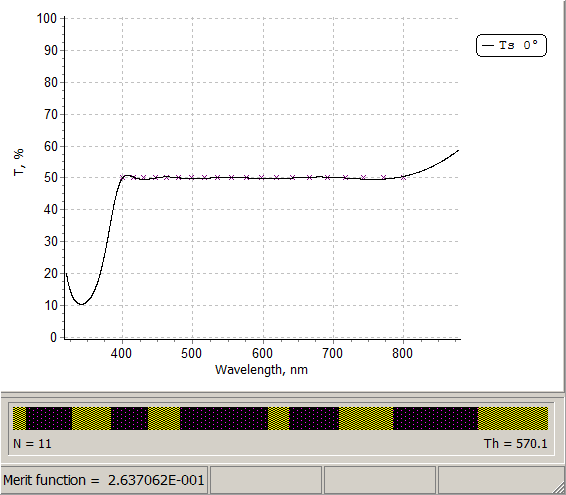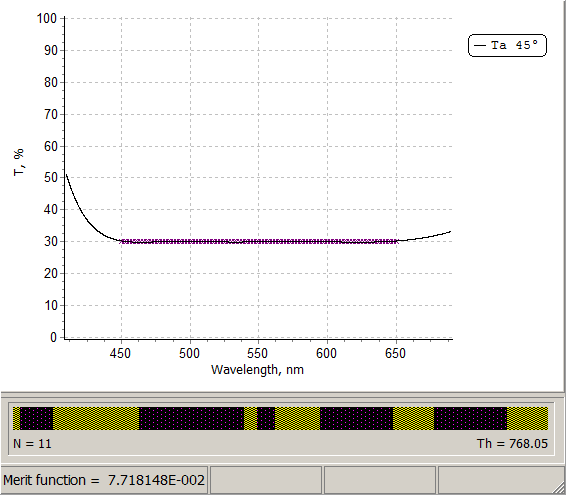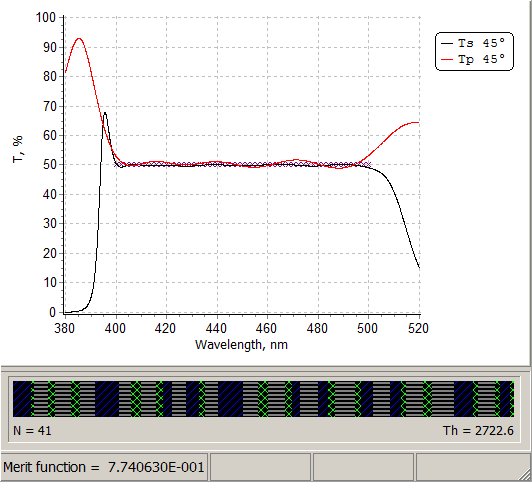|
Beamsplitters separate incident light into two components consisting of a reflected and a transmitted band. Beamsplitters is designed so to achieve a specified reflectance and transmittance over a spectral range of interest. Beamsplitters are used also to separate two polarizations. Typically the splitter is situated in a 45°-angle to the incident beam Reflectance and transmittance of neutral beamsplitters are to be close to a constant in a specified spectral range. Values of reflectance and transmittance can be expressed in percentage, for example, 50% and 50%, 30% and 70% and so on. |
|
|
|
This beamsplitter operates in the spectral range from 400 to 800 nm. Target specifications: T=R=50% (unpolarized light) Materials: TiO2/SiO2, Glass substrate
|
|
OptiLayer allows designing beamsplitters exhibiting any specified ratio T:R, for example, T=30% and R=70% (left pane) or T=70% and R=30% (right pane). Spectral range of interest can be, for example, from 450 to 650 nm and AOI equal to 45 degrees. |
|
|
|
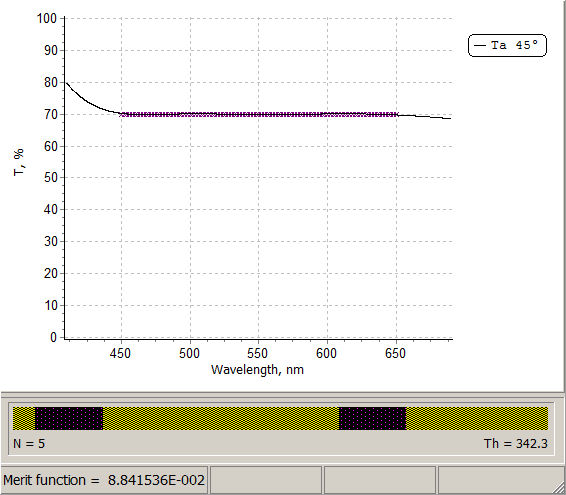 |
 See the details of our design process in our video exercise at YouTube See the details of our design process in our video exercise at YouTube |
|
|
|
|
|
|
The immersed 41-layer beamsplitter operates at AOI of 45 degrees in the spectral range from 400 to 500 nm. Target specifications: Ts=Tp=50% Materials: ZnS/Al2O3/MgF2, Glass substrate, Incident medium is Glass Design method: Gradual evolution Software tool: OptiLayer
|
|
We can design an immersed polarizing beamsplitter operating in the spectral range from 400 to 700 nm for AOI of 65-75 degrees. Refractive index of the corresponding prism is 1.85. These design specifications were taken from Li Li and J.A. Dobrowolski, “New developments in thin film polarizing beamsplitters”, in Optical Interference Coatings, Vol. 9, OSA Technical Digest Series, (Optical Society of America, Washington DC, 1998), pp. 158-160. Target specifications:
|
 |
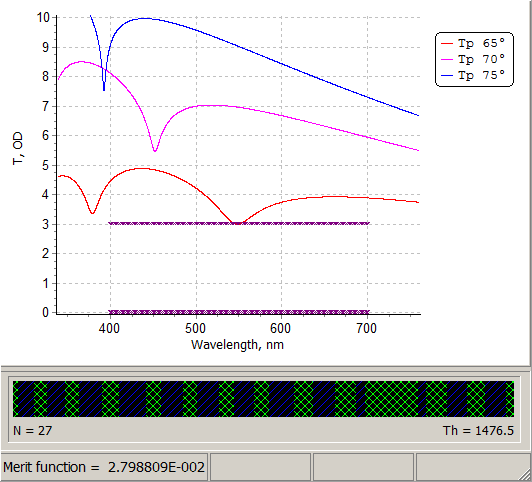 |
Materials with refractive indices 2.35 and 1.45. Design Technique: Gradual Evolution Software: OptiLayer
|
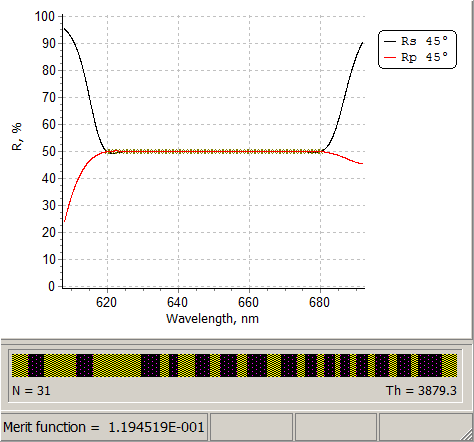 |
The beamsplitter operates in the spectral range from 620 to 680 nm. Target specifications: Rs=Rp=50% Ten design solutions exhibiting excellent spectral performances. Number of layers from 28 to 34 layers. OptiLayer BBM or Monochromatic simulators will help you to select the most practical designs.
|
|
Materials: Nb2O5/SiO2, Glass substrate Design Technique: Gradual Evolution/Needle Optimization Software: OptiLayer |
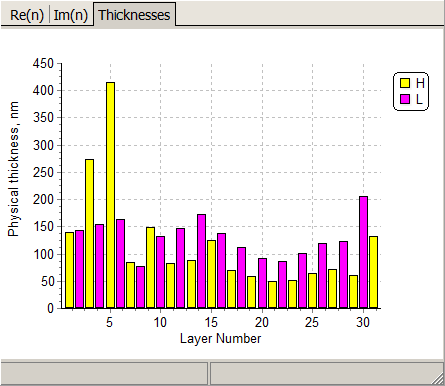 |

